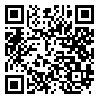BibTeX | RIS | EndNote | Medlars | ProCite | Reference Manager | RefWorks
Send citation to:
URL: http://jgs.khu.ac.ir/article-1-2730-en.html
2- Azad university, Tehran, Iran, North Seoul - Seoul city - St. N. - No. 5 first floor
3- Khwarizmi University of Karaj, Tehran, Iran, North Seoul - Seoul city - St. N. - No. 5 first floo
4- Islamic Azad university, Tehran, Iran, North Seoul - Seoul city - St. N. - No. 5 first floo
Solid waste is an integral part of human life, generation of various quantities and qualities of which is one of the greatest environmental problems of the current era. Application of modern tools and technology to find the right place for recycling, where the volume of recyclable materials can be reduced, seems vital for reusing the recoverable materials contained in normal waste and their recycling and reusing in the cycle of industry. The study aimed to find a location for recycling and its converting industries in Kelardasht, Iran. This was a descriptive and analytical research with a survey approach. At first, experts of the field were recognized and a scientific panel was formed to identify the relevant criteria through Delphi method. In this respect, five criteria of the distance from residential and commercial areas, the distance from urban streets, the distance from the river, the distance from the hospital and education centers, and the distance from hotels, banks, and offices were selected. After that, the permitted distances for these criteria were determined by Delphi technique, followed by the application of the centroid method to determine the exact distances. Moreover, the analytical hierarchy process (AHP) and geographic information system (GIS) were exploited to determine the and use weights in raster maps and generation of the zoning map. Furthermore, the best locations for recycling were selected in Kelardasht using field survey method and based on the zoning map. According to the results, four sites were selected for recycling of recoverable solid waste in this region
| Rights and permissions | |
 |
This work is licensed under a Creative Commons Attribution-NonCommercial 4.0 International License. |

This work is licensed under a Creative Commons — Attribution-NonCommercial 4.0 International (CC BY-NC 4.0)






